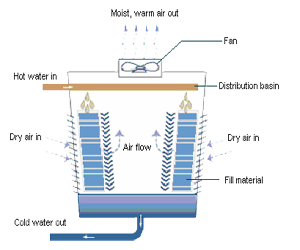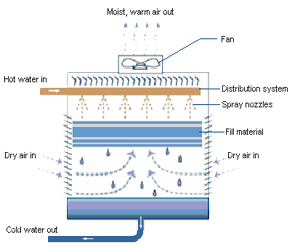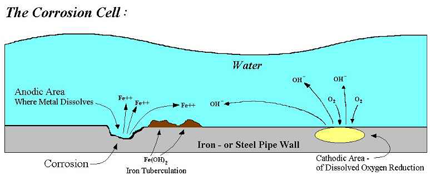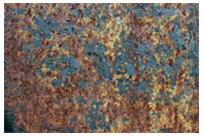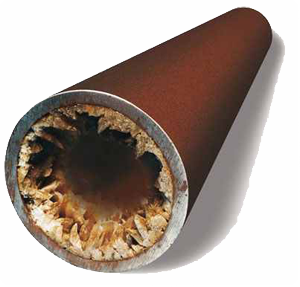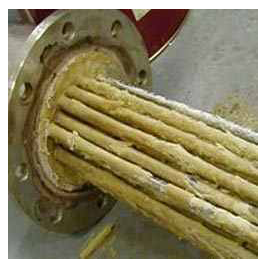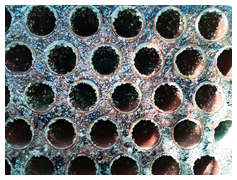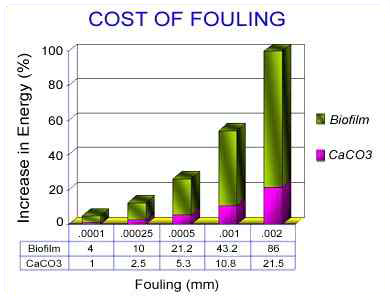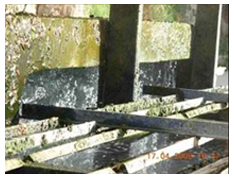|
Cooling Tower System
General Description
A cooling tower is a heat rejection device, which extracts waste heat to the atmosphere though the cooling of a water stream to a lower temperature.
Cooling water systems are very important part especially in operated systems. Problems in cooling systems can cause severe damage, outage of equipment and in some cases forward to be in shutdown. Cooling tower can be classified into:
Common cooling towers problems
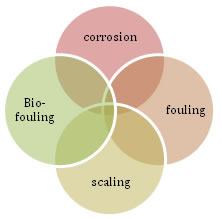 1- Corrosion
Corrosion is the primary means by which metals deteriorate. Most metals corrode on contact with water (and moisture in the air), acids, bases, salts, oils, aggressive metal polishes, and other solid and liquid chemicals. Metals will also corrode when exposed to gaseous materials like acid vapors, formaldehyde gas, ammonia gas, and sulfur containing gases. Corrosion specifically refers to any process involving the deterioration or degradation of metal components. The best known case is that of the rusting of steel. Corrosion processes are usually electrochemical in nature Corrosion is the primary means by which metals deteriorate.
2- Scales. Scale deposits are formed by precipitation and crystal growth on a surface which is in contact with water, Precipitation occurs when solubility’s are exceeded either in the bulk water or the surface. The most common scale-forming salts that deposit on heat transfer surfaces are those that exhibit retrograde solubility with temperature. Although they may be completely in the lower temperature bulk water, these compounds (e.g., calcium carbonate, calcium phosphate, and magnesium silicate) supersaturate in the higher-temperature water adjacent to the heat transfer surface and precipitate on the surface. Scaling is not always related to temperature, Calcium carbonate and calcium sulphate scaling occur on unheated surfaces when their solubility’s are exceeded in the bulk water.
3- Fouling. Fouling occurs when insoluble particles suspended in recirculation water form deposits on a surface, Fouling mechanisms are dominated by particle-particle interactions that lead to the formation of agglomerates. At low water velocities, particle settling occurs under the influence of gravity. Parameters that affect the rate of settling are particle size, relative liquid, particle densities, and liquid viscosity. The most important factor affecting the settling rate is the size of the particle, Because of this, the control of fouling by preventing agglomeration is one of the most fundamental aspects of deposition control. 4- Microbiological Fouling.
Microbiological fouling in cooling systems is the result of abundant growth of algae, fungi, and bacteria on surfaces. Once-through and open or closed recirculation water systems may support microbial growth, but fouling problems usually develop more quickly and are more extensive in open recirculation systems. Open recirculation systems scrub microbes from the air and, through evaporation, concentrate nutrients present in makeup water. As a result, microbe growth is more rapid , Process leaks may contribute further to the nutrient load of the cooling water. A biological control program must be designed to meet the specific needs of cooling water system.
|
|||||||||||||||||||||||||||||||
|
|
|||||||||||||||||||||||||||||||
 |
 |
||||
